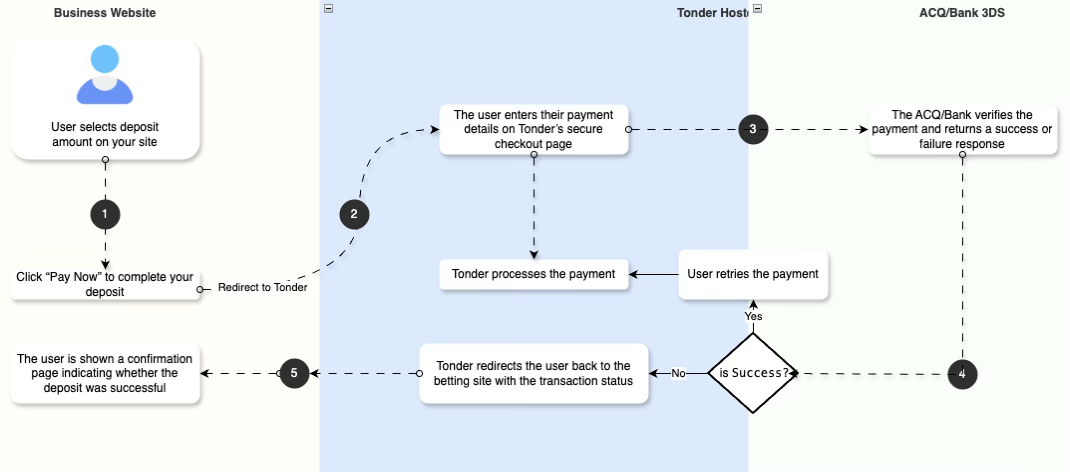Benefits
Tonder’s Hosted Checkout offers several advantages for your business:- Get started quickly with a low-code integration that involves just one API call to create a payment session.
- Securely accept card payments without handling sensitive card data directly on your servers, as Tonder handles PCI DSS compliance.
- Adapt the checkout page to your brand by adding your logo and changing colors, button shapes, and more.
- Automatically support a variety of payment methods available to your business.
High-Level Flow
The integration process consists of four main parts: session creation, user redirection, payment completion, and status confirmation.
1
User Initiates Payment
Your customer clicks “Pay Now” on your website, triggering your server to create a payment session via the Tonder API.
2
Redirect to Tonder
Tonder returns a secure URL that you use to redirect your customer to the Hosted Checkout page.
3
Payment Verification
The customer enters their payment details on Tonder’s secure checkout page, and the payment is verified with the acquiring bank or 3DS provider.
4
Payment Processing
Based on the verification result, Tonder processes the payment. If declined, the customer can retry with a different payment method.
5
Return to Your Site
Tonder redirects the customer back to your website with the transaction status, and you display a confirmation page indicating whether the payment was successful.
Next Steps
Ready to integrate Tonder Hosted Checkout? Here are the resources to help you get up and running:- Follow our step-by-step Quick Start guide to create your first payment.
- See the complete details for all Hosted Checkout API endpoints in the API Reference.

